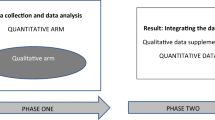Abstract
Planning for research and youth welfare programs in every developed and developing country is essential if man envisages the normalization of sick adolescents. Adolescent unit programs are needed in India, as in all parts of the United States, and should be an integral part of medical institutes in every university. Actually, the problem of generation gap, ego identity, and subcultures (i.e., peer group pressure) creating negative attitudes in youth is one of the most explosive problems that behavioral scientists face in the modern era. The present project is an attempt to study the self-image, ego strength, self-esteem, or level of psychological well-being of a normal adolescent group of Indians and to compare this with youth of three other nationalities-American, Irish, and Australian. To measure the self-esteem of an individual, 11 areas of conflict including impulse control, emotional tone, body and self-image, social attitudes, morals, sexual attitudes, family relations, external mastery, vocational and educational goals, psychopathology, and superior adjustment have been examined. The Hindi version of the Offer Self-image Questionnaire has been used. The sample consists of 400 boys and 400 girls, ages 14 to 18, of middle class socioeconomic status; the educational level is high school/intermediate. It is concluded that American and Australian adolescents, in general, have higher self-esteem or ego strength than do Indian and Irish adolescents, respectively.
Similar content being viewed by others
References cited and bibliography
Aichhorn, H. (1935).Wayward Youth, Viking Press, New York.
Brownfain, J. J. (1952). Stability of the self concept as a dimension of personality.J. Abnorm. Soc. Psychol. 47: 597–606.
Carpenter, T. R. S., and Busse, T. V. (1969). Development of self concept in Negro and White welfare children.Child Dev. 49(3): 935–939.
Cole, M. Protest and discontent. InIn the Past, Pelican Books, Penguin Books Ltd.
Coleman, J. S. (1961).The Adolescent Society, Free Press, New York.
Edwards, A. L. (1957).Techniques of Attitude Scale Construction. Appleton-Century-Crofts, New York.
Engel, M. (1959). The stability of the self concept in adolescence.J. Abnorm. Soc. Psychol. 58: 74–83.
Erikson, E. H. (1950).Childhood and Society, Norton, New York.
Feuer, L. S. (1969).The Conflict of Generations: The Character and Significance of Student Movement, Basic Books, New York.
Freud, A. (1958). Adolescence.Psychoanalytic Stud. Child XVI: 225–278.
Hill, J. P., and Shelten, J. (eds.) (1971).Readings in Adolescent Development and Behavior, Prentice-Hall, Englewood Cliffs, N.J.
Mazumdar, D. N. (1958).Races and Cultures of India, Asia Publishing House, Bombay.
McQuitty, L. L. (1950).A Measure of Personality Integration in Relation to the Concept of Self.
Neit, E. B. (1965).The Nature of Human Conflict, Prentice-Hall, Englewood Cliffs, N.J.
Offer, D. (1969).The Psychological World of the Teenager: A Study of Normal Adolescent Boys, Basic Books, New York.
Peck, R. F. (1958). Family patterns correlated with adolescent personality structure.J. Abnorm. Soc. Psychol. 57: 347–350.
Rosenberg, W. R. (1965).Society and the Adolescent Self Image, Princeton University Press, Princeton.
Rosengren, W. R. (1961). The self in the emotionally disturbed.Am. J. Social. 66: 113–127.
Starr, J. M. (1974). The peace and love generations: Changing attitudes toward sex and violence among college youth.J. Soc. Iss. 30(2): 73–106.
Stock, D. (1949). An investigation into the intercorrelation between the self concept and feelings directed toward other persons or groups.J. Consult. Psychol. 13.
Symonds, P. D. (1949).Adolescent Fantasy, Columbia University Press, New York.
Winer, I. B. (1970).Psychological Disturbance in Adolescence, Wiley, New York.
Author information
Authors and Affiliations
Additional information
Received her Ph.D. in psychology from the Banaras Hindu University in India. Since 1974 she has been Chairman of the Department of Psychology at Banaras Hindu University. In 1972, she was selected, under the Social Science Exchange program, to spend one year at the Illinois State Psychiatric Institute and the Psychiatric and Psychosomatic Institute of Michael Reese Hospital. Her interests are clinical, social, and psychological aspects of crime and delinquency, and cross-cultural studies of adolescents.
Rights and permissions
About this article
Cite this article
Agrawal, P. A cross-cultural study of self-image: Indian, American, Australian, and Irish adolescents. J Youth Adolescence 7, 107–116 (1978). https://doi.org/10.1007/BF01538690
Received:
Issue Date:
DOI: https://doi.org/10.1007/BF01538690




